If you’re anything like me, always on the hunt for new, gut-friendly drinks that don’t taste like medicine, then let me introduce you to my latest obsession: kefir soda.
This fizzy, slightly tangy, and naturally sweet drink has completely taken over my kitchen experiments—and my fridge space! Kefir soda is not only packed with probiotics, but it’s also a fun, low-effort way to make a homemade “soda” that’s actually good for you. Think of it as the bubbly lovechild between your favorite soda and a health elixir.
In this guide, I’ll walk you through everything I’ve learned on my kefir soda journey—from what it is, how it’s different from kombucha, its gut-boosting benefits, and how you can make it from scratch with simple ingredients. I’ll also cover tips for getting the perfect fizz, flavoring ideas, and what to do if your brew doesn’t turn out quite right.
Table of Contents
Discovering Kefir Soda: A Naturally Fizzy Probiotic Drink
What Is Kefir Soda?
Kefir soda is a naturally fermented, carbonated drink made using water kefir grains—a mix of beneficial bacteria and yeast. Unlike milk kefir, which uses dairy, this version is entirely dairy-free and plant-based, making it a favorite for vegans and those with lactose intolerance.
The fermentation process breaks down sugars into acids, carbon dioxide, and probiotics. That’s how you end up with a slightly tangy, mildly sweet drink that bubbles like soda but heals like a tonic.
How Kefir Soda Differs from Traditional Milk Kefir
While both are fermented and probiotic-rich, milk kefir and kefir soda have some key differences:
| Feature | Milk Kefir | Kefir Soda |
|---|---|---|
| Base Liquid | Dairy milk | Sugar water or fruit juice |
| Type of Grains | Milk kefir grains | Water kefir grains |
| Flavor Profile | Tangy, creamy | Fizzy, slightly sweet & tart |
| Vegan-Friendly? | No | Yes |
| Common Uses | Smoothies, dressings | Refreshing drink, soda replacement |
If you’re craving something fizzy that won’t weigh you down like dairy might, kefir soda is your go-to. I personally love sipping it on a hot afternoon, especially after a meal—it feels like a reset for my stomach.
Print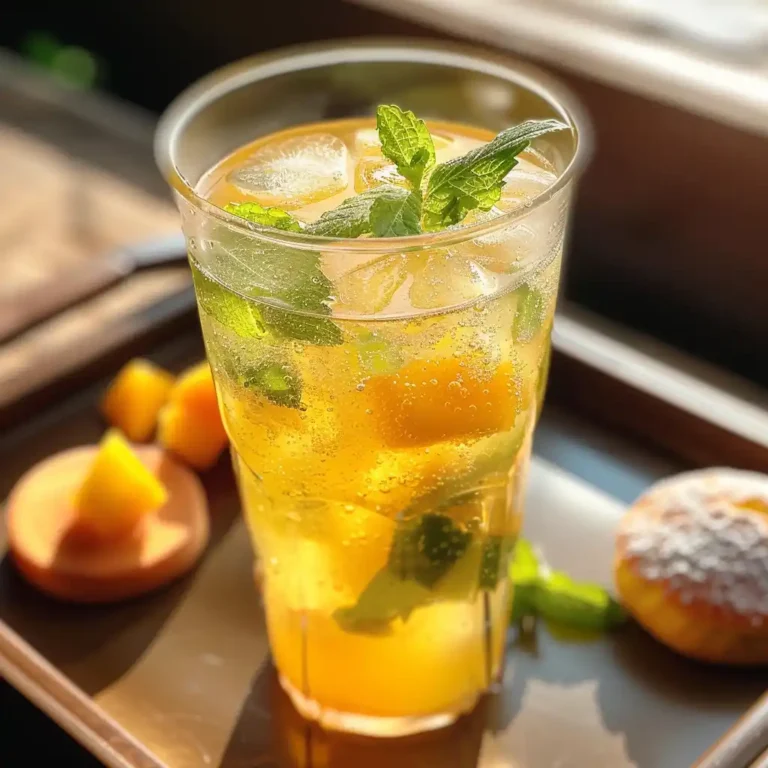
What Is Kefir Soda? A Refreshing, Probiotic-Rich Drink You’ll Love
Kefir soda is a bubbly, probiotic-rich drink made by fermenting sugar water with water kefir grains—perfect for gut health and naturally caffeine-free.
- Total Time: 48 hours
- Yield: 4 servings 1x
Ingredients
- ¼ cup active water kefir grains
- ¼ cup organic cane sugar (or brown sugar)
- 3–4 cups filtered water (non-chlorinated)
- 1–2 slices of lemon or dried fruit (optional)
- Fresh fruits, herbs, or juice for flavoring (after first ferment)
Instructions
- Dissolve sugar in water inside a glass jar.
- Add water kefir grains.
- Optionally, add lemon slice or dried fruit.
- Cover with cloth or paper towel and secure.
- Let sit at room temperature (70–75°F) for 24–48 hours.
- Strain the liquid into a clean container and save grains.
- Add flavorings like juice, herbs, or fruit.
- Pour into airtight bottles with 1-inch headspace.
- Ferment at room temp 24–48 hours more.
- Burp bottles daily to avoid overpressure.
- Refrigerate once carbonation is achieved.
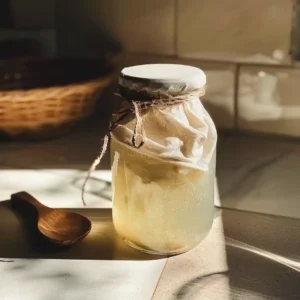
Notes
Always use non-metal tools with kefir grains. Refrigeration halts fermentation and preserves fizz. Experiment with fruits like mango, berries, or ginger for unique flavors.
- Prep Time: 10 minutes
- Cook Time: 0 minutes
- Category: Drink
- Method: Fermentation
- Cuisine: Global
- Diet: Vegan
Nutrition
- Serving Size: 1 glass
- Calories: 25
- Sugar: 3g
- Sodium: 10mg
- Fat: 0g
- Saturated Fat: 0g
- Unsaturated Fat: 0g
- Trans Fat: 0g
- Carbohydrates: 6g
- Fiber: 0g
- Protein: 0g
- Cholesterol: 0mg
The Origins of Kefir Soda and Why It’s Gaining Popularity
Ancient Fermentation Practices and the Birth of Kefir Soda
The story of kefir soda starts long before it became a wellness trend. Fermented drinks have been around for thousands of years—think ancient cultures in the Caucasus Mountains, where traditional milk kefir is believed to have originated. Over time, variations like water kefir evolved in warmer climates, especially in Central America, where people began using “tibicos” grains (another name for water kefir grains) to ferment sugary beverages.
What fascinates me is how this humble, bubbly drink connected so many cultures. Whether it was sugar water left out on a warm day or fruit juice that started fermenting on its own, the people who discovered it knew they had something special. It was refreshing, slightly intoxicating (just a little), and above all, good for the gut.
Kefir soda as we know it today is essentially a revival of these old-school fermentation methods, made popular again by the modern health movement. And let me tell you—it’s one trend that’s worth the hype.
Why Kefir Soda Is Trending in Modern Health Culture
I first heard about kefir soda while browsing a local organic market in San Diego. Bottles of beautifully labeled, naturally colored, fizzy drinks lined a fridge, promising probiotic support and low sugar. I took one sip and was hooked. But what really drew me in was the idea that I could make it myself at home with just a jar, sugar, water, and kefir grains.
Here’s why it’s popping up everywhere:
- Gut health awareness: With more people focusing on digestion, immunity, and reducing inflammation, fermented drinks like kefir soda are becoming staples in health-conscious homes.
- Low sugar and natural: Unlike sugary sodas and energy drinks, kefir soda offers natural sweetness with significantly less sugar after fermentation.
- Customizable flavors: From hibiscus and lemon to mango or mint, it’s easy to experiment and create your signature blend.
- Vegan and dairy-free: It’s a fizzy probiotic that anyone can enjoy, regardless of dietary restrictions.
Kefir soda isn’t just a drink—it’s a movement. I’ve even shared it at gatherings, and people are always amazed that something so good for you can taste this fun and fizzy.
Kefir Soda vs. Kombucha: What Sets Them Apart?
Flavor Profile and Fermentation Process Differences
Before I made my first batch of kefir soda, I was deep into a kombucha phase. I brewed, flavored, and burped jars of kombucha for weeks—until I discovered kefir soda. Let me tell you, while both are fizzy and fermented, they’re very different animals.
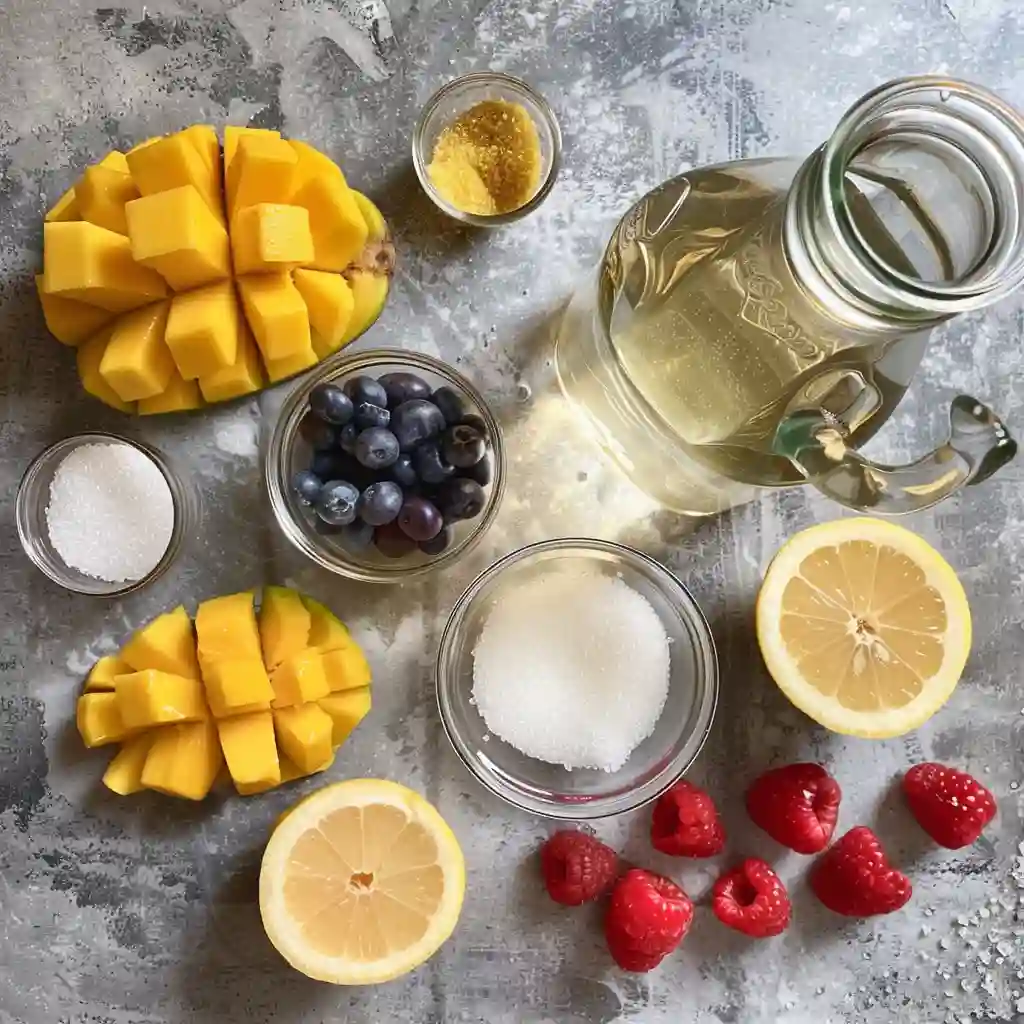
Here’s a breakdown of their core differences:
| Aspect | Kefir Soda | Kombucha |
|---|---|---|
| Starter Culture | Water kefir grains (bacteria + yeast) | SCOBY (Symbiotic Culture of Bacteria and Yeast) |
| Fermentation Time | 24–48 hours | 7–14 days |
| Flavor | Light, mildly sweet and tangy | Sharp, vinegary, acidic |
| Caffeine | None | Yes (from tea) |
| Sugar Content (pre-ferment) | Moderate sugar (converted to probiotics) | High sugar (also mostly fermented out) |
| Carbonation | Naturally fizzy (shorter ferment) | More controlled, needs extra steps |
Kefir soda finishes fermentation much quicker, making it perfect for impatient DIYers like me. It also doesn’t need tea, so you can enjoy it without any caffeine—ideal for evenings or kids.
Plus, it tastes friendlier to first-timers. If kombucha’s tang is a bit much for you, kefir soda’s gentle fizz and fruity sweetness might be more your vibe.
Health Benefits and Drawbacks of Each Beverage
Both drinks are packed with probiotics, but they come with their own set of perks and considerations.
Kefir Soda Benefits:
- Short fermentation = less sugar but more living probiotics
- Caffeine-free and lower acidity
- Easier to digest for many due to mild nature
- Naturally hydrating and lightly energizing
Kombucha Benefits:
- Contains organic acids that help detox the liver
- Slightly higher antioxidant content due to tea
- Can help suppress harmful bacteria in the gut
Drawbacks? Well, kombucha can irritate sensitive stomachs due to its strong acidity, while kefir soda may ferment too quickly in warm temperatures, leading to over-carbonation or alcohol buildup.
Personally, I keep both in rotation. But when I want something refreshing, quick to make, and easy to flavor, kefir soda wins every time.
Benefits of Drinking Kefir Soda for Gut Health
Probiotic Content and Its Impact on Digestion
When I first got into fermentation, I was mostly intrigued by the science. But what truly sold me on this drink was how it made me feel. After just a few weeks of sipping my homemade brews, I noticed less bloating, smoother digestion, and a lighter, more energized gut. That’s no coincidence—this bubbly probiotic powerhouse works from the inside out.
Water kefir grains introduce billions of beneficial bacteria and yeasts into your drink, many of which survive digestion and colonize your gut. These microbes help:
- Break down food more efficiently
- Improve nutrient absorption, especially B vitamins and minerals
- Support regular bowel movements
- Balance gut flora, especially after antibiotics or poor diet
And here’s the beautiful part: Unlike dairy kefir or yogurt, this version is completely non-dairy, so it’s gentle on the stomach and ideal for anyone avoiding lactose.
In fact, many people turn to it as a daily digestive tonic. I usually drink mine in the morning or mid-afternoon—it’s refreshing, and it gives me a noticeable lift without the crash of coffee.
Immune System Support and Detox Benefits
Here’s something you might not know: over 70% of your immune system lives in your gut. That means what you feed your digestive system directly affects your body’s ability to fight off infections, reduce inflammation, and detox naturally.
Thanks to its rich probiotic profile, this fermented drink supports immunity in multiple ways:
- Encourages diverse gut flora, which strengthens immune response
- Produces natural antimicrobial substances that fight harmful bacteria
- Helps reduce inflammation, a common cause of fatigue and brain fog
- Promotes regular detox through healthy digestion and liver support
It’s not a miracle cure—but when paired with good sleep, movement, and a clean diet, this fizzy friend is a powerful part of your wellness toolkit.
How to Make Kefir Soda at Home
Ingredients and Tools You’ll Need
The first time I made kefir soda at home, I was shocked at how simple it was. No fancy equipment, no special skills—just a few ingredients and a little patience. If you’ve ever brewed tea or made a smoothie, you’re more than ready for this!
Here’s what you’ll need to get started:
Basic Ingredients:
- ¼ cup active water kefir grains
- ¼ cup organic cane sugar (or brown sugar)
- 3–4 cups filtered water (non-chlorinated is a must!)
- 1–2 slices of lemon or dried fruit (optional, for minerals and taste)
- Fresh fruits, herbs, or juice for flavoring (added after first ferment)
Equipment:
- 1-quart glass jar or mason jar
- Plastic or wooden spoon (avoid metal with kefir grains)
- Breathable cloth or paper towel with a rubber band
- Fine mesh plastic strainer
- Flip-top bottles or mason jars for second fermentation (carbonation)
These are all staples in my kitchen now. I use them constantly, not just for kefir soda but for other fermentation projects, too.
Step-by-Step Instructions and Fermentation Tips
I like to think of making kefir soda in two stages: the primary ferment (to build probiotics) and the secondary ferment (to create carbonation and flavor).
Step 1: First Fermentation (24–48 hours)
- Dissolve sugar in water inside your glass jar.
- Add water kefir grains.
- Optionally, toss in a slice of lemon or a fig (acts as food and mineral source for the grains).
- Cover with cloth or paper towel and secure it.
- Let sit at room temperature (70–75°F) for 24–48 hours. Taste it—it should be mildly sweet and lightly tangy.
Step 2: Strain and Flavor
- Strain the liquid into a clean container. Save your grains for the next batch.
- Add fruit juice, herbs, or flavorings like berries, ginger, or citrus zest.
Step 3: Second Fermentation (24–48 hours)
- Pour flavored kefir water into airtight bottles, leaving 1-inch headspace.
- Seal and let ferment at room temperature for another 24–48 hours.
- Check daily to avoid bottle explosions! Refrigerate once it’s fizzy enough.
Tips for Success:
- Always use non-metal tools with kefir grains.
- If your house is warm, ferment for less time.
- For more fizz, use fresh fruit juice and tightly sealed bottles.
- Refrigerate to slow fermentation and lock in carbonation.
Once you’ve nailed this basic process, you’ll be hooked. It’s fun, satisfying, and way healthier than any store-bought soda.
Flavoring Ideas and Natural Carbonation Tips
Fruity, Herbal, and Exotic Flavor Combinations
Here’s where kefir soda gets really fun—flavoring! I think of it like crafting your own natural soda fountain. The combinations are endless, and the results? Delicious, colorful, and totally addictive (in the best way).
Here are some of my all-time favorite flavor combos you can try during the second fermentation:
| Flavor Combo | Ingredients | Notes |
|---|---|---|
| Ginger Lemon | Fresh ginger slices + lemon juice | Classic, great for digestion |
| Berry Blast | Crushed blueberries + raspberries + mint | Sweet and tangy with a cooling twist |
| Tropical Sunrise | Pineapple chunks + mango + coconut water | Perfect for summer mornings |
| Citrus Mint | Orange + lime zest + fresh mint leaves | Super refreshing and zingy |
| Lavender Blueberry | Dried lavender buds + blueberries | Beautiful aroma, calming |
| Apple Cinnamon Spice | Apple slices + cinnamon stick | Cozy and sweet, ideal for fall |
Start with about 2–3 tablespoons of fruit or ¼ cup juice per bottle, and adjust to taste. I love using organic fruit pulp or juicing fresh citrus for bold flavors.
How to Achieve the Perfect Fizz Safely
If you’re wondering how to get that satisfying pop and fizz when you open your kefir soda, you’re not alone. I chased fizz for weeks before getting it just right.
Here’s how to naturally carbonate your kefir soda—without exploding your kitchen:
1. Use Airtight Bottles
Flip-top glass bottles work best. Mason jars don’t seal as tightly, so they lose pressure.
2. Add a Sugar Source
Even if you added fruit, a little natural sugar like honey, agave, or fruit juice gives the bacteria something to “eat” and convert to gas.
3. Ferment in a Warm Spot
Ideal temperature: 70–75°F. If it’s cooler, fermentation slows down. Warmer? It speeds up (sometimes too fast).
4. Burp the Bottles
Open bottles once a day to release pressure—especially if you’re using high-sugar ingredients like pineapple or mango.
5. Chill Before Opening
Cold slows carbonation and reduces risk of overflow. Always refrigerate before popping open.
Remember: fizz builds over time. Sometimes I let mine go 72 hours before chilling—and the result is a bubbly masterpiece that rivals any soda.
Check out our chocolate tiramisu for a bold dessert pairing—try it with espresso vanilla kefir soda for a unique twist.
Is Kefir Soda Safe? Understanding Alcohol Content and Storage
Does Kefir Soda Contain Alcohol?
When I first served my homemade kefir soda to a friend, the first thing she asked after taking a sip was, “Wait… is there alcohol in this?” Great question—and one I get a lot.
Yes, kefir soda contains a very small amount of alcohol, but not enough to get you buzzed.
Here’s the science: during fermentation, natural sugars are broken down by bacteria and yeast into carbon dioxide (for fizz), acids (for flavor and preservation), and trace alcohol. Most batches range between 0.2% to 1% alcohol by volume, depending on:
- Length of fermentation
- Room temperature
- Sugar content
- Seal tightness of the bottle
To keep alcohol levels low:
- Stick to 24–48 hour ferments
- Don’t overdo sugar or juice in the second ferment
- Store in the fridge once fizzy
If you’re worried about alcohol content—especially for kids or pregnancy—it’s best to keep ferments short and test with a hydrometer if you want exact numbers.
In my experience, the alcohol is barely detectable, but it’s good to be aware.
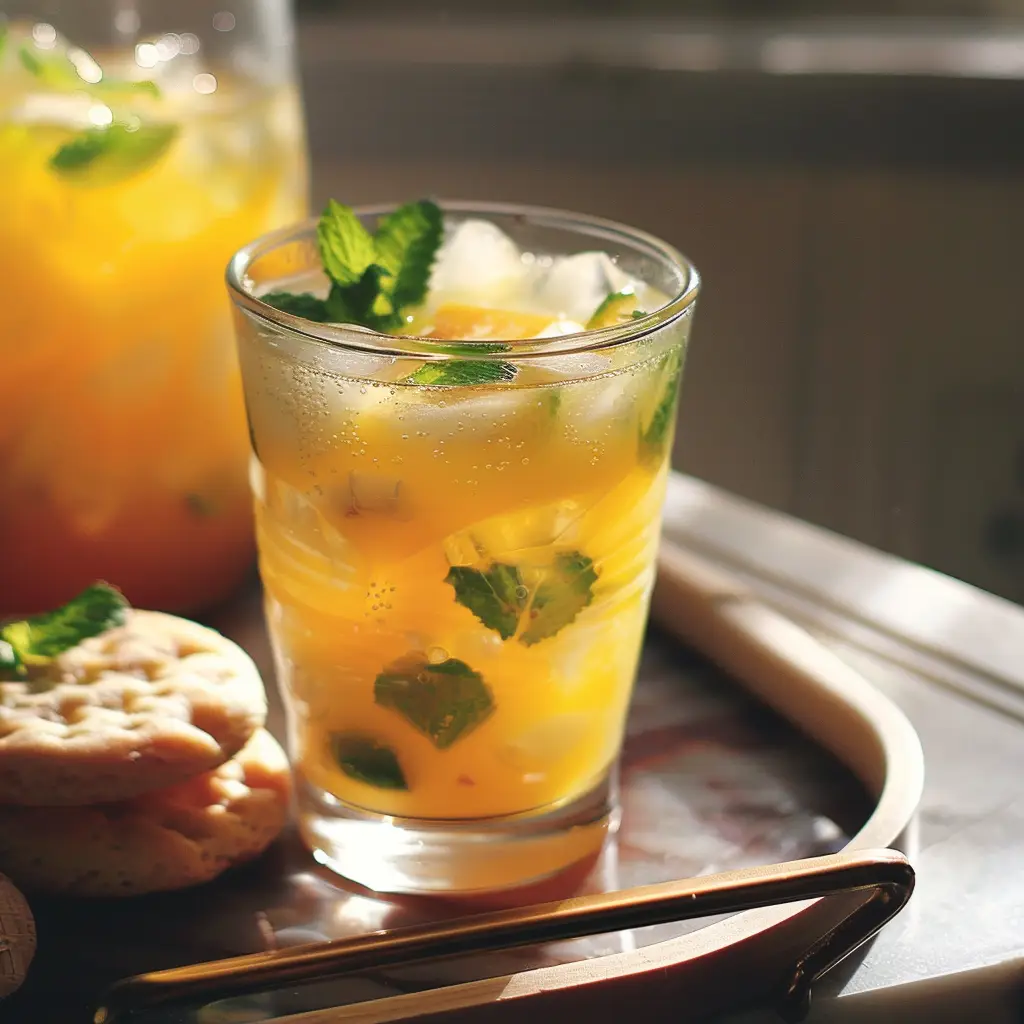
Best Practices for Safe Storage and Alcohol Control
Keeping your kefir soda safe (and tasty!) comes down to how you store it. When I first began brewing, I made the mistake of leaving a bottle sealed on the counter for five days. Let’s just say… it opened itself.
Here’s how to safely store kefir soda:
- Always refrigerate once carbonated
Refrigeration halts fermentation, reducing both alcohol and carbonation buildup. - Don’t ferment in direct sunlight or hot rooms
Keep your bottles in a cool, shaded spot around 70–75°F. - Use strong, quality bottles
Cheap glass can crack under pressure. I use swing-top bottles designed for brewing. - Label and date everything
This way, you’ll track how fizzy each batch gets over time. - Burp bottles if unsure
Open slightly once a day during second fermentation to avoid overpressure.
Following these steps keeps your soda safe, delicious, and alcohol levels in check.
Common Kefir Soda Issues and How to Fix Them
Why Your Kefir Soda Isn’t Fizzy Enough
When I first started brewing kefir soda, I expected fireworks—bubbles, pop, fizz… but my first few batches? Flat. Totally flat. Don’t worry if you’re in the same boat. Getting a satisfying fizz can take a little practice and tweaking.
Here are the main reasons your kefir soda might be flat, and what to do about it:
| Problem | Fix |
|---|---|
| Too short second fermentation | Let it sit another 24–48 hours, checking pressure daily |
| Loose or non-sealed containers | Use swing-top bottles for a tight seal |
| Not enough sugar for yeast | Add a bit of fruit juice or sugar before sealing |
| Grains not active enough | Revive grains with molasses or mineral-rich water |
| Cold fermentation environment | Move jars to a warmer spot (70–75°F works best) |
A good rule? Give your bottle a gentle shake before refrigerating—if bubbles form on top, you’re on track. And if not? Just keep experimenting. The learning curve is part of the fun.
What to Do If Your Kefir Soda Smells Off or Tastes Bad
Fermentation can feel like a mystery science experiment, and occasionally things don’t go as planned. If you’ve ever popped open a bottle and been hit with a funky smell or strange taste, don’t panic—here’s how to troubleshoot.
Common Issues and Fixes:
- Smells like sulfur or rotten eggs
Likely caused by stressed grains. Refresh them in clean sugar water for 24 hours. - Too sour or vinegary
Fermented too long. Cut fermentation time next round and refrigerate earlier. - Cloudy or slimy texture
Could be yeast overgrowth or contamination. Clean your equipment and start a fresh batch with healthy grains. - White film on top (not fuzzy)
Often harmless wild yeast. Skim it off and monitor. If it turns fuzzy or pink, discard. - Mold (fuzzy, colored spots)
Toss the batch and start over. Mold means something went wrong.
Trust your senses—if something smells or looks really off, it’s better to be safe and dump it. I’ve lost a few jars in my journey, and while it’s a bummer, it’s part of learning to master the process.
Looking for something to brighten your kefir soda day? Don’t miss our matcha tres leches—it’s creamy, vibrant, and a perfect contrast to a citrus-infused kefir soda.
FAQs About Kefir Soda Answered
What is a kefir soda?
Kefir soda is a naturally fermented, probiotic-rich drink made using water kefir grains, which are clusters of beneficial bacteria and yeast. Unlike milk kefir, kefir soda is completely dairy-free and made by fermenting sugar water or fruit juice. The result? A light, fizzy drink that tastes like a refreshing soda but comes with gut-friendly health benefits. It’s easy to flavor, quick to make (24–48 hours), and a great alternative to sugary soft drinks or acidic kombucha.
What’s the difference between kefir soda and kombucha?
The main difference lies in the fermentation culture and the base liquid:
- Kefir soda uses water kefir grains and is made from sugar water or fruit juice.
- Kombucha uses a SCOBY (Symbiotic Culture of Bacteria and Yeast) and ferments brewed tea.
Kefir soda is less acidic, caffeine-free, and quicker to ferment (just 1–2 days). Kombucha, on the other hand, needs a longer fermentation time (7–14 days), contains caffeine, and often has a stronger, vinegary taste.
Is kefir ok if it’s fizzy?
Absolutely. In fact, fizz is a sign your kefir soda is alive and thriving! The carbonation comes from natural fermentation—when bacteria and yeast convert sugars into gas (CO₂). A fizzy kefir soda means your grains are active and your ferment is healthy. Just remember to refrigerate once the soda reaches the desired level of fizziness to prevent over-fermentation.
If your kefir is too fizzy or the bottle seems over-pressurized, “burp” the lid (open slightly to release gas) and chill it immediately.
How much alcohol is in kefir soda?
Most homemade kefir sodas contain a very low amount of alcohol—typically between 0.2% and 1% ABV, depending on:
- How long it was fermented
- How much sugar was used
- Temperature during fermentation
- Whether it had a second ferment (especially with fruit)
For context, that’s about the same as ripe fruit or a bottle of kombucha. If you want to keep alcohol levels minimal, stick to short ferment times (24–36 hours), use low-sugar recipes, and always refrigerate your kefir once it’s fizzy.
Conclusion: From Curious Sip to Fizzy Ritual
I never imagined that a humble glass jar, a scoop of sugar, and some quirky little grains could transform my daily routine. But kefir soda isn’t just a drink—it’s an experience. It’s the anticipation of opening a fizzy bottle, the joy of tasting a new flavor combo, and the satisfaction of doing something nourishing for your body.
Whether you’re here for gut health, a soda alternative, or the thrill of fermentation, I hope this guide gave you everything you need to dive in. Start simple, play with flavors, and most of all—have fun with it.
For more fermented recipes, kitchen experiments, and wellness inspiration, follow me on Facebook and explore my visual guides on Pinterest.
Stay curious, stay bubbly.
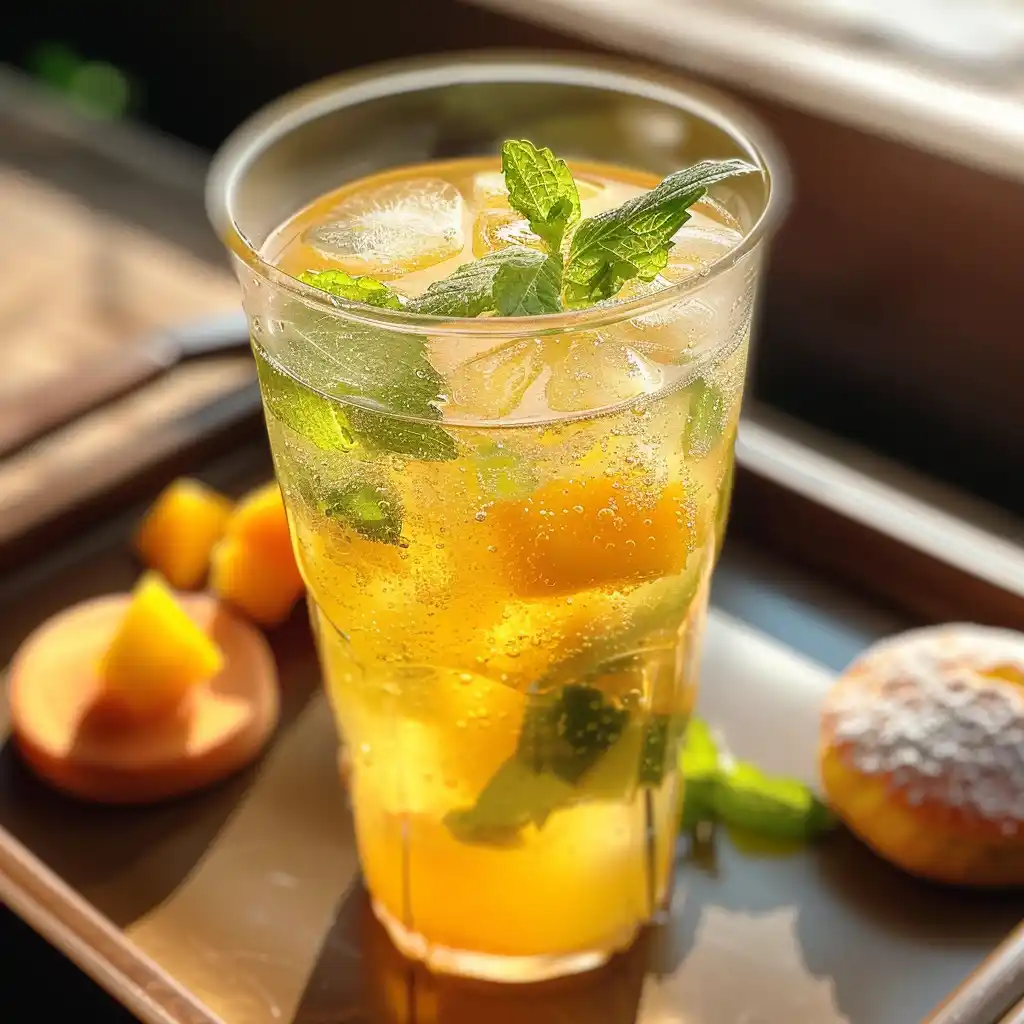

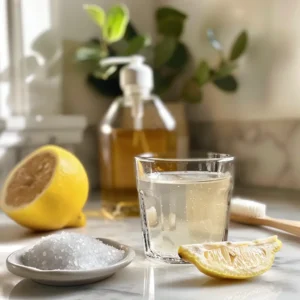
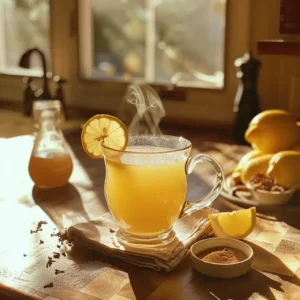




1 thought on “What Is Kefir Soda? A Refreshing, Probiotic-Rich Drink You’ll Love”